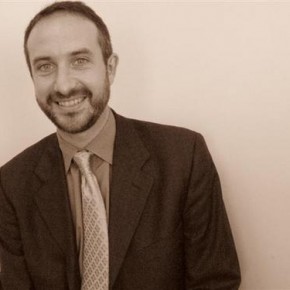That’s where Diane and Adam pick up the thread, actually putting forward really interesting things for big organizations to try, and looking past the symptom of deficits to the actual problem: massively out of date business models. Kaiser’s criticism of the ‘new model’ people is that they haven’t offered up The Secret Formula(tm), and both Ragsdale and Huttler rightly reject this. Here’s Adam:
It’s obvious to everyone that the field is in real trouble, especially traditional institutions. The word “model” suggests that there is a magical template somewhere, like the secret of turning lead into gold, which could act as a panacea and solve all of our problems. Even better, this one template is supposed to work for every organization in every situation. What a lovely, comforting notion! If only someone could find the “new model” and share it with the rest of us, everything would be sunshine and rainbows now and forever!
I hate to be the bearer of bad news, but no such model exists. (Rest assured, however, Santa is 100% real. I know because I met him at the mall the other day.)
On the question of “new models” etc., Ragsdale and Huttler have it right. And while they aren’t offering a magic pill to save our arts organizations, they both focus on new kinds of distribution as a potentially fruitful avenue to explore. I totally agree, and I’d like to pick up on some things they were saying about the Metropolitan Opera’s HD broadcasts to movie theaters. Obviously, this is one of the biggest successes in digital distribution by a traditional arts organization in recent memory. It reaches huge audiences and has done wonderful things for the public image of the Metropolitan Opera, and opera generally. Bloomberg (a corporate sponsor of the broadcasts) reported earlier this year that the broadcasts bring in more than $11 million in profits annually.
The idea Diane Ragsdale threw out in a comment (and before her coffee) is for the met to distribute other organizations’ content through the same channels:
As an example, when I saw the success of the Met broadcasts but also the challenges of trying to develop high quality product at a rate to meet the demand of that new distribution system I wondered why Peter Gelb wasn’t approaching the other major opera companies or other major institutions in the world to record and distribute them as well (a “best of opera … or best of culture … ” season that he could market to cinemas). That didn’t happen (for whatever reasons) and within a few years other companies started to experiment on their own. But are we better off with all of these opera and theater companies competing in this space? Or would we be better off with a joint venture that could more readily scale to meet demand if it grows?
This is a pretty mundane example, I admit. It’s early here and I haven’t had my coffee. 😉
Adam Huttler responded in comments, and fleshed out the idea in his own post:
The mundane example that everyone cites (and that I’ve cited before) is the Metropolitan Opera’s HD broadcasts in movie theaters. These have been more successful than I ever would have predicted, and demonstrate that even awkward first steps outside the concert hall can discover new audiences and new revenue. In the short term, they present an as yet un-pursued opportunity for the Met to leverage its unique distribution channel to promote work by other companies (hat tip to Diane for this idea). In the long run, the potential for innovation in distribution technology is far more profound. If I may be so crass as to quote myself from back in June:
Fifty years from now, I suspect we’ll look back on [the Met’s HD broadcasts] as a crude early experiment that laid the groundwork for currently unimaginable aesthetic experiences, like virtual reality immersion and environmental projection. If Mahler’s symphony can be performed “live” for an audience of millions, then suddenly the economics look pretty healthy.

First, let’s look at the different motivations of gigantic and median-sized institutions engaging in digital distribution. Shirky is in particular calling out a mismatch that happens when you try to act like Harvard without being nearly so big:
Harvard’s endowment, 31 billion dollars, is over three hundred times the median, and only one college in five has an endowment in the first place. Harvard also educates only about a tenth of a percent of the 18 million or so students enrolled in higher education in any given year. Any sentence that begins “Let’s take Harvard as an example…” should immediately be followed up with “No, let’s not do that.”
…
Outside the elite institutions, though, the other 75% of students—over 13 million of them—are enrolled in the four thousand institutions you haven’t heard of: Abraham Baldwin Agricultural College. Bridgerland Applied Technology College. The Laboratory Institute of Merchandising. When we talk about college education in the US, these institutions are usually left out of the conversation, but Clayton State educates as many undergraduates as Harvard. Saint Leo educates twice as many. City College of San Francisco enrolls as many as the entire Ivy League combined. These are where most students are, and their experience is what college education is mostly like.
If you’re as big as Harvard, and you’ll never really fail, and the economic pressure hitting most of the field doesn’t really apply to you, you won’t be looking at new forms of digital distribution as a way to reshape your whole business model. Shirky goes on to cite Ian Bogost in saying that “Moocs are marketing for elite schools.”
For Harvard, Stanford, MIT, etc., the costs of producing a MOOC are basically zero, and the revenues from a MOOC are bigger, but also basically zero. What they do get is a big image boost, that raises the perceived value of getting, or having gotten, an undergraduate education at those schools. But for the Laboratory Institute of Merchandising, the budgetary impact of producing MOOCS would far outweigh the marketing benefit. It might make sense for an organization of that size to just switch entirely from being a physical school to being an online one (and you can see the boom in online education, both reputable and super-sketchy, as some evidence of that). But for the top dogs its a different ball game.
Implications for the Arts
So what does that tell us about the Metropolitan Opera in HD? What does that say about whether the Met should become a digital distributor? I’d say that the difference in size between the Metropolitan Opera and a median arts organization isn’t nearly as vast as the one between Harvard and the esteemed Laboratory Institute of Merchandising. As such the distortion in their motivations for going digital isn’t as vast either. Also, the cost of producing a live HD broadcast of an opera and getting it into movie theaters far outstrips the cost of producing and distributing a MOOC, which further aligns the interests of giant arts groups and median arts groups. However, there is still a big difference here.
For the first few years, the Met in HD broadcasts were just marketing (in that they weren’t a real revenue source), just like MOOCs for elite schools. And as marketing the Met in HD has done an amazing job. But I think the Met has a great reason not to become a digital distributor of high culture all by itself: it would give up a lot of the marketing power of an exclusive channel. Yes, the met could probably figure out a way to distribute more content and make more profit. It would get more culture out to more people, and help the bottom line. The economies of scale are there, but not amazing, and there is a question of mission creep, but for me the main reason not to do it is the marketing.
But the Metropolitan Opera is the Harvard of the arts world. Let’s not take them as an example for everyone else! So what should median-sized groups do? We do know that they’re looking to radically change their business models rather than to market their core products. That’s just a function of their size, and that’s the key distinction for me. Everyone who does this is looking for marketing and for revenue, but which goal is motivating you most will shape your decisions as you go.
(As a side note, now that we have this distinction between median and giant organizations, we can cut Michael Kaiser some slack. If we want to. Kaiser’s advice is probably not that dumb for the Harvards of the art world – get more efficient, and strengthen your ties to city governments, foundations, and wealthy donors, as well as to your ticket buyers, and you’re well on your way. For median arts organizations, that isn’t really a viable option since the incumbents are crowding out the little guys. For them, radically new models aren’t risky, they’re the only option.)
But how should we think about this stuff? Adam Huttler’s post gives us a good framework for the potential benefits of new distribution (not always digital distribution) for arts organizations:
The distribution side is where things get exciting. I would argue that most large institutions are really in the business of distributing content, not producing content. If they choose to maintain a stable of musicians or dancers, then they’re essentially insourcing a critical supplier. The heart of the operation is about financing, marketing, and distributing artistic content.
To really change the game, we have to blow up our established conventions around distribution. We must figure out ways of extending our performances beyond the limited seats in our theatres, and our exhibits beyond the limited floor space in our galleries. Yes, this is sacrilege. Yes, the live arts experience is sublime and pure and the reason we all got into this crazy business in the first place. We can either ride that purity straight over Kaiser’s fiscal cliff, or we can get over ourselves and go invent something equally sublime and wonderful that isn’t constrained by real estate and floor plans.
There’s a ton of fertile ground in radical approaches to distribution, and there’s a lot of really interesting work to be done in building the tools for digital distribution suitable for typical situations, not just super elite organizations. (hat tip to CASH music and Jesse Von Doom, who just told me to make this post as long as it needs to be. Blame him if you’re bored).
There’s a long way to go down the road to new distribution. After all, the theater itself started as a distribution method. Let’s play the tape through to the end, or at least a few decades in the future. I don’t know what all the new distribution methods (both digital and analog) will look like, but it certainly seems possible that our community arts organizations will look a lot more like hyper-targeted (geographically or otherwise), and mainly digital, distributors than they will look like the big buildings they currently occupy. Their main assets would be their audiences, which we’ll call communities by then, and which will be the most perfect, pristine mailing lists of engaged subscribers you could imagine.
How they’d deliver arts experiences is the really awesome question. Will they have custom built software, or off the shelf? Will the creation of a new way to deliver art be the province of the artists themselves? Will there be any kind of standard for a way to deliver a play to a massive group of people at a ridiculously low cost? Will we all still be using livestream and watching it break all the time, or will we figure out something better and awesome… I’m obviously in the “better and awesome” camp, and I can’t wait to see what we invent.
Artists and Distributors
Let’s take another threat from Adam Huttler’s post, this one about the demise of the salaried artist and the rise of the project-based entrepreneurial artist (who hopefully can still afford to buy stuff with money). If we also take seriously the idea that arts institutions are turning into distributors, we can start to map out some of what this arts economy might look like. Basically, it makes the fine arts world look a lot more like getting a book deal out of a tumblr blog.
The costs of producing your tumblr blog are low, and it’s a great writing sample that can show a book agent or publisher who’s paying attention whether you’re ready to write a book. Looking at other arts, as the costs of production have dropped, distributors and others have expected the artist to produce more and more on spec before inking a deal. The end result is where the book industry is now: you submit a finished manuscript, written on spec, to an agent.
Also, that tumblr blog’s success is measured by how many people read it. That is to say, you have to build a community around your art before any distributor will look your way. If you have that community, your book will likely have a paying audience all set before the book gets anywhere near printing.
We’re likely to see more and more types of artists expected to produce work and a community on their own, and to bring those things to the table when dealing with a distributor – just like authors already do. That’s been part of how artists develop followings and influence for a while now. But if arts organizations become super-nimble distributors, then we might have some idea of who’s going to be sitting across the table from these artists and their communities when deals are struck.
I don’t like to write long think-pieces without actual recommendations for Things To Do(tm) in them, so here we go:
- Artists: Make tons of work, and put it in front of tons of people. Don’t just build a body of work, build a community that cares about the work. That’s your greatest investment for the future. It’s the best way to make your art better. And you’ll be in a great negotiating position when someone does offer you a record deal, or a commission, or something else.
- Organizations: Try to figure out what a profitable version of a MOOC is for your organization. Or try to think of what your organization would do if you were going to do the Met in HD broadcasts, but tailored for your needs, your budget, and your audience.
- Technologists: There are a lot of digital distribution and consumption tools that the arts need that we don’t have yet. Building them probably won’t make you Google-rich, but there’s definitely a business here, and you’ll be helping the arts sector into the 21st century in a big way. I’m so down for co-founding one of these.
- Everybody: pay attention to Diane Ragsdale, Adam Huttler, and Clay Shirky. These are smart cookies and there’s a lot we can learn by paying close attention. Plus, lots of other fields outside the arts are bumping into the internet and figuring new stuff out – learn from them.
I’m sure I’ve missed something in here somewhere, and I’m sure there are holes to be poked in my thinking. Please go for it – I love being wrong about this stuff, especially when I’m out on a limb as creaky as this one.


